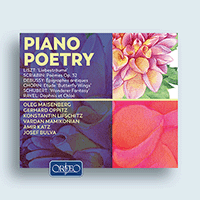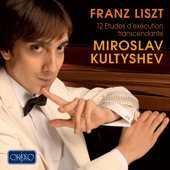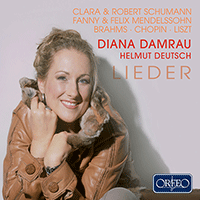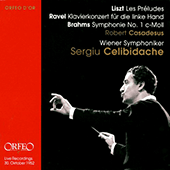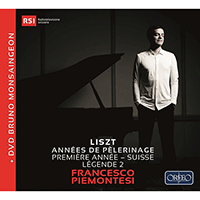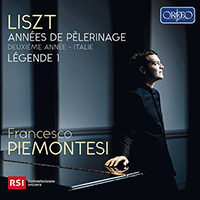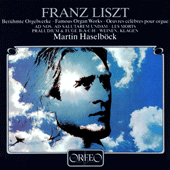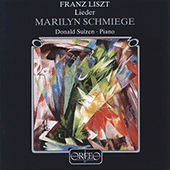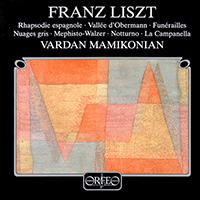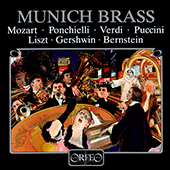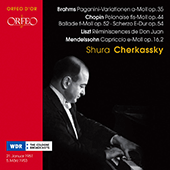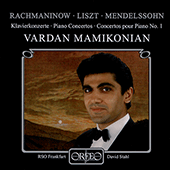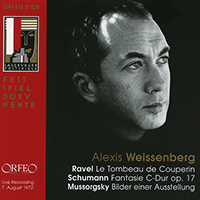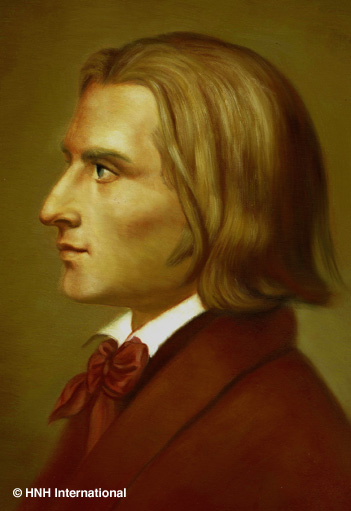
Franz Liszt (1811 - 1886)
Liszt was the son of a steward in the service of the Esterházy family, patrons of Haydn. He was born in 1811 at Raiding in Hungary and moved as a child to Vienna, where he took piano lessons from Czerny and composition lessons from Salieri. Two years later, in 1823, he moved with his family to Paris, from where he toured as a pianist. Influenced by the phenomenal violinist Paganini, he turned his attention to the development of a similar technique as a pianist and in 1835 left Paris with his mistress, the Comtesse d’Agoult, with whom he travelled widely during the following years as his reputation as a pianist of astonishing powers grew. In 1844 he separated from his mistress, the mother of his three children, and in 1848 he settled in Weimar as Director of Music Extraordinary, accompanied by Princess Sayn-Wittgenstein. He now turned his attention to composition and in particular to the creation of a new form: the symphonic poem. In 1861 Liszt moved to Rome, where he found expression for his long-held religious leanings. From 1869 he returned regularly to Weimar, where he had many pupils, and later he accepted similar obligations in Budapest, where he was regarded as a national hero. He died in Bayreuth in 1886, four years after the death of his son-in-law Wagner. As a pianist he had no equal, and as a composer he suggested to a younger generation of musicians the new course that music was to take.
Orchestral Music
Liszt’s symphonic poems met strong criticism from champions of pure music, who took exception to his attempts to translate into musical terms the greatest works of literature. The best known of the symphonic poems are Ce qu’on entend sur la montagne, based on Victor Hugo; Les Préludes, based on Lamartine; works based on Byron’s Tasso and Mazeppa; and Prometheus, along with the so-called Faust Symphony in Three Character Sketches after Goethe and the Symphony to Dante’s Divina Commedia. Other orchestral works include two episodes from Lenau’s Faust, the second the First Mephisto Waltz (to which a second was added 20 years later, in 1881). Liszt wrote two piano concertos, and, among other works for piano and orchestra, Totentanz (‘Dance of Death’) and Fantasy on Hungarian Folk Melodies. Six of Liszt’s Hungarian Rhapsodies, written for piano, were effectively arranged for orchestra by Franz Doppler and revised by Liszt.
Piano Music
Liszt wrote a great deal of music for the piano, some of which was later revised and consequently exists in a number of versions. In addition to original piano music he also made many transcriptions of the work of other composers and wrote works based on national themes. The violinist Paganini was the immediate inspiration for the Études d’exécution transcendante d’après Paganini, dedicated to Clara Schumann, wife of the composer Robert Schumann, and based on five of Paganini’s 24 caprices for solo violin and the last movement of his Violin Concerto No. 2 (‘La campanella’). The Transcendental Studies, revised in 1851 as Études d’exécution transcendante, form a set of 12 pieces, including ‘Wilde Jagd’ (‘Wild Hunt’), ‘Harmonies du soir’ (‘Evening Harmony’), and ‘Chasse-Neige’ (‘Snow Plough’). The three collections later given the title Années de pèlerinage (‘Years of Pilgrimage’) wander from Switzerland in the first book to Italy in the second two; they form a series of evocative poetic pictures, inspired by landscape, poems and works of art. The earlier volumes stem from the years of wandering with Marie d’Agoult, and the last from the final period of Liszt’s life, based in Rome. The Harmonies poétiques et religieuses, written between 1845 and 1852, represent, in the 10 pieces included, something of the composer’s lasting religious feelings. These feelings are also evident in the Légendes of 1863, the first of the two representing St Francis of Assisi preaching to the birds and the second St Francis de Paul walking on the water. The remarkable Weinen, Klagen, Sorgen, Zagen, based on a theme from a Bach cantata, mourns the death of his elder daughter Blandine. His Fantasia and Fugue on the letters of ‘Bach’ (B flat – A – C – H, the last being B natural in English notation) was originally written for organ. Liszt wrote one sonata, novel in its form.
The Hungarian Rhapsodies, eventually appearing as a set of 19 pieces, are based on a form of art music familiar in Hungary and fostered by gypsy musicians, although these works are not, as Liszt thought, a recreation of true Hungarian folk music. The Rapsodie espagnole makes use of the well-known La folia theme, used by Corelli and many other Baroque composers, and the jota aragonesa. Transcriptions of his own orchestral and choral compositions include a version of the second of his three Mephisto Waltzes, works supporting legends that had once dogged Paganini concerning diabolical assistance in performance. Of the many other transcriptions for piano, those of the Beethoven symphonies are among the most remarkable. There are a number of operatic transcriptions and fantasies. These include Réminiscences de Don Juan, based on Mozart’s Don Giovanni, and a dozen or so based on the work of his friend and son-in-law Wagner.
Sacred Choral Music
Although associated primarily with instrumental music, piano works and orchestral symphonic poems, Liszt also wrote a quantity of sacred choral music. This ranges from his patriotic oratorio The Legend of St Elisabeth to a whole range of liturgical and devotional works in which he sought to reform Catholic church music from the prevailing sentimentality of the period.
Organ Music
Although his skill as an organist could not match his abilities as a pianist, Liszt nevertheless took a strong interest in the organ and contributed to the repertoire of the instrument with works that make some demands on technical virtuosity.







